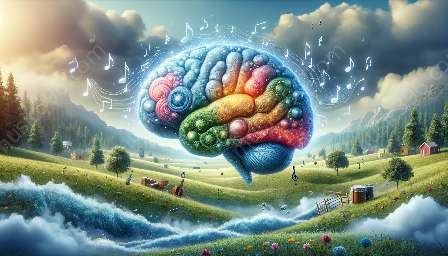Music has profound effects on mental well-being, and understanding the methods to measure its impact is crucial. This topic cluster explores the dynamic relationship between music, the brain, and mental health, providing comprehensive insights into the various methods employed to evaluate the influence of music on mental well-being.
The Connection Between Music and Mental Well-Being
Before delving into the measurement methods, it's crucial to understand the profound connection between music and mental well-being. Music has the power to evoke emotions, trigger memories, and influence mood, making it a potent tool for enhancing mental health. Whether it's through listening to music, engaging in musical activities, or creating music, the impact on mental well-being is undeniable.
Music and the Brain
The intricate relationship between music and the brain plays a pivotal role in understanding its influence on mental well-being. Research has uncovered the neurobiological mechanisms underlying the effects of music on the brain, including the activation of reward pathways, modulation of emotional processing, and synchronization of neural activity. By comprehending these neurological processes, scientists can better assess the impact of music on mental well-being.
Methods for Measuring the Impact
There are several methods that can be employed to measure the impact of music on mental well-being, encompassing both qualitative and quantitative approaches. These methods provide valuable insights into the cognitive, emotional, and behavioral effects of music, contributing to a comprehensive understanding of its influence on mental health.
Neuroimaging Studies
Neuroimaging techniques, such as functional magnetic resonance imaging (fMRI) and positron emission tomography (PET) scans, offer a window into the brain's response to music. By analyzing neural activity and connectivity patterns, researchers can discern the specific regions and networks involved in processing music and its effects on mental well-being.
Psychophysiological Measurements
Utilizing psychophysiological measurements, such as heart rate variability, galvanic skin response, and electroencephalography (EEG), enables the assessment of physiological responses to music. These measures provide valuable data on how music influences autonomic and central nervous system activity, shedding light on its impact on stress levels, emotional arousal, and relaxation.
Self-Report Measures
Self-report measures, including questionnaires, interviews, and diaries, capture the subjective experiences and perceptions of individuals regarding the impact of music on their mental well-being. These qualitative assessments offer valuable insights into the emotional, cognitive, and behavioral changes induced by music, reflecting the individualized nature of its effects.
Behavioral Observations
Conducting behavioral observations in controlled environments or naturalistic settings allows researchers to assess the behavioral expressions and responses elicited by music. Observing aspects such as movement, facial expressions, and social interactions provides tangible evidence of how music influences mood, social connectedness, and overall well-being.
Interpreting the Findings
Once the impact of music on mental well-being has been measured using various methods, interpreting the findings is essential for drawing meaningful conclusions. The integration of neuroscientific, psychological, and behavioral data enables researchers to unravel the complexity of the relationship between music and mental well-being, paving the way for targeted interventions and applications.
Applications and Implications
Understanding the impact of music on mental well-being holds significant implications for diverse fields, ranging from clinical psychology and music therapy to education and public health. The applications of this knowledge extend to developing personalized interventions, enhancing therapeutic practices, and promoting the integration of music in mental health care.
Conclusion
Measuring the impact of music on mental well-being encompasses a multidimensional approach that bridges the realms of neuroscience, psychology, and human experience. By employing diverse methods to assess its influence, we gain deeper insights into the transformative power of music and its profound effects on mental health.




































